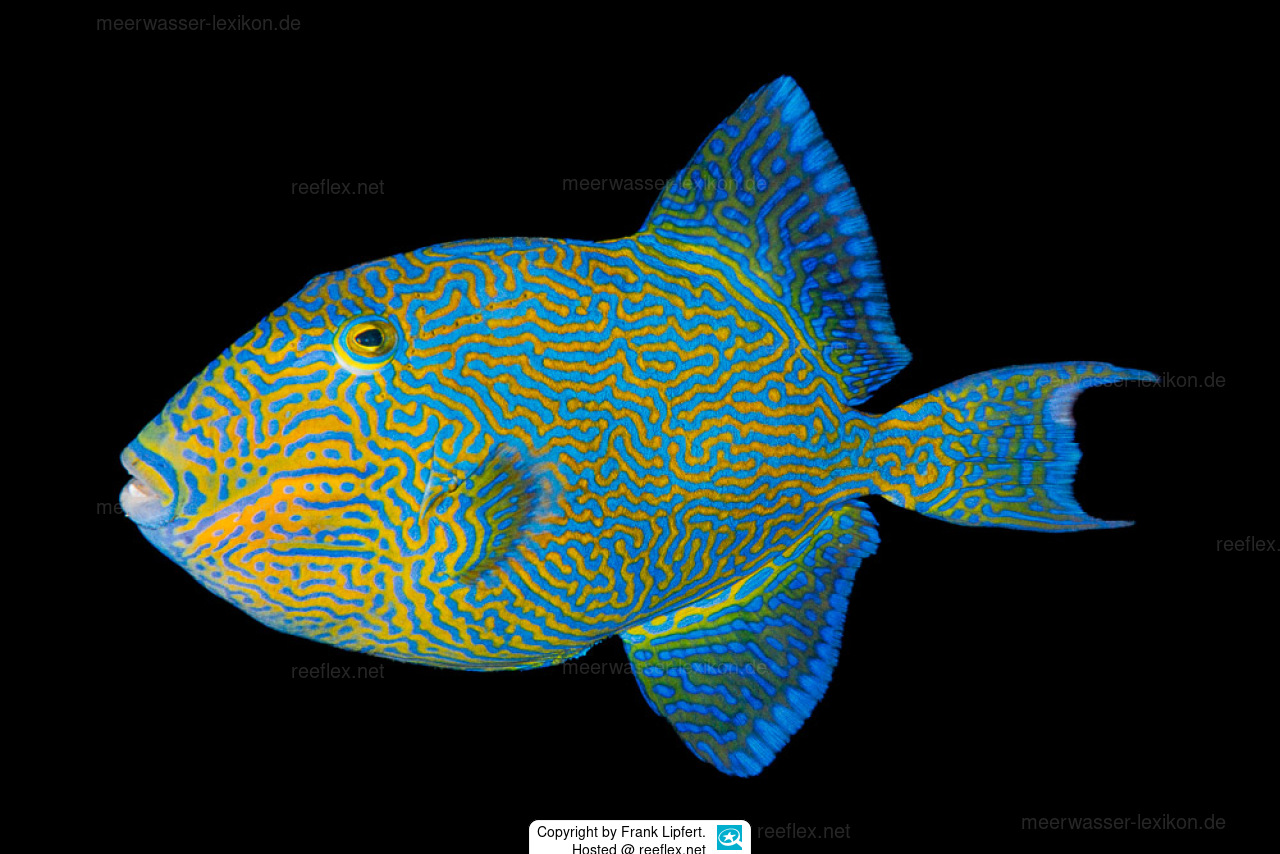Info
Pseudobalistes fuscus (Bloch & Schneider, 1801)
Rarely lives in pairs in the sea, which should also be considered in the aquarium. P. fuscus is hardy and probably grows too large for most normal home aquariums.
It reaches up to 55 cm in its natural habitat! You should not socialize it with other triggerfish, this will only work conditionally for a while. In addition, you should completely avoid more delicate, smaller fish, they might not survive.
Shrimp/small fish in the aquarium?
Due to the natural hunting instinct, shrimp or even small fish are considered food and if the size is suitable, they will be chased and eaten.
Also cleaner shrimps can fall victim to the hunter, if the hunger is correspondingly large.
It should be fed a balanced diet and there is always the danger that it will eat sea urchins, mussels and other crustaceans. There are reports that it can even damage corals,
Synonymised names:
Balistes caerulescens Rüppell, 1829
Balistes fuscus Bloch & Schneider, 1801
Balistes rivulatus Rüppell, 1837
Rarely lives in pairs in the sea, which should also be considered in the aquarium. P. fuscus is hardy and probably grows too large for most normal home aquariums.
It reaches up to 55 cm in its natural habitat! You should not socialize it with other triggerfish, this will only work conditionally for a while. In addition, you should completely avoid more delicate, smaller fish, they might not survive.
Shrimp/small fish in the aquarium?
Due to the natural hunting instinct, shrimp or even small fish are considered food and if the size is suitable, they will be chased and eaten.
Also cleaner shrimps can fall victim to the hunter, if the hunger is correspondingly large.
It should be fed a balanced diet and there is always the danger that it will eat sea urchins, mussels and other crustaceans. There are reports that it can even damage corals,
Synonymised names:
Balistes caerulescens Rüppell, 1829
Balistes fuscus Bloch & Schneider, 1801
Balistes rivulatus Rüppell, 1837







 Frank Lipfert, Deutschland
Frank Lipfert, Deutschland
















